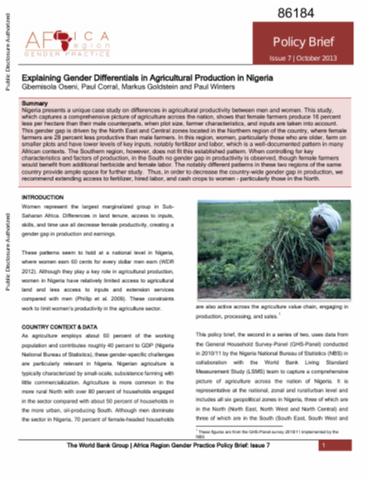Explaining Gender Differentials in Agricultural Production in Nigeria
Nigeria presents a unique case study on differences in agricultural productivity between men and women. This study, which captures a comprehensive picture of agriculture across the nation, shows that female farmers produce 16 percent less per hectare than their male counterparts, when plot size, farmer characteristics, and inputs are taken into account. This gender gap is driven by the North East and Central zones located in the Northern region of the country, where female farmers are 28 percent less productive than male farmers.


